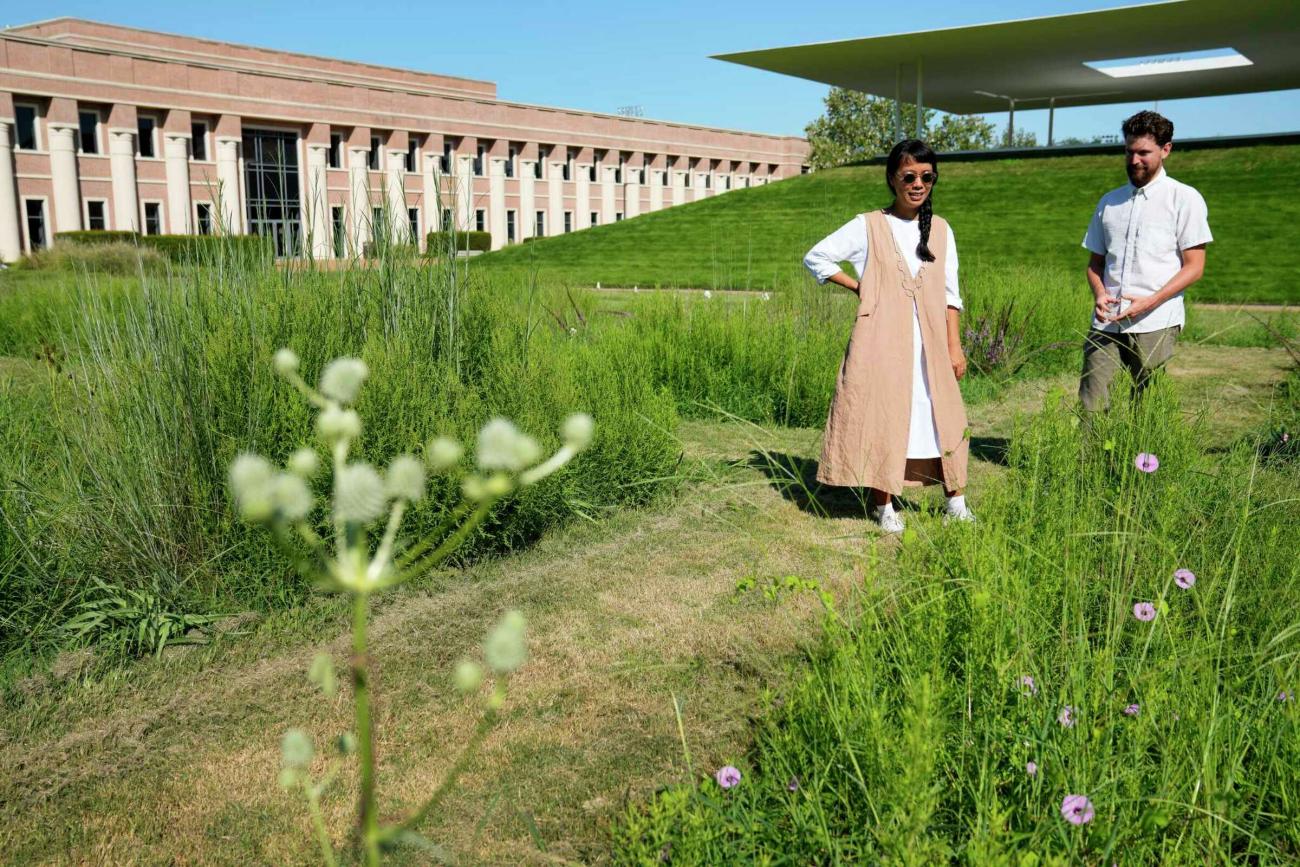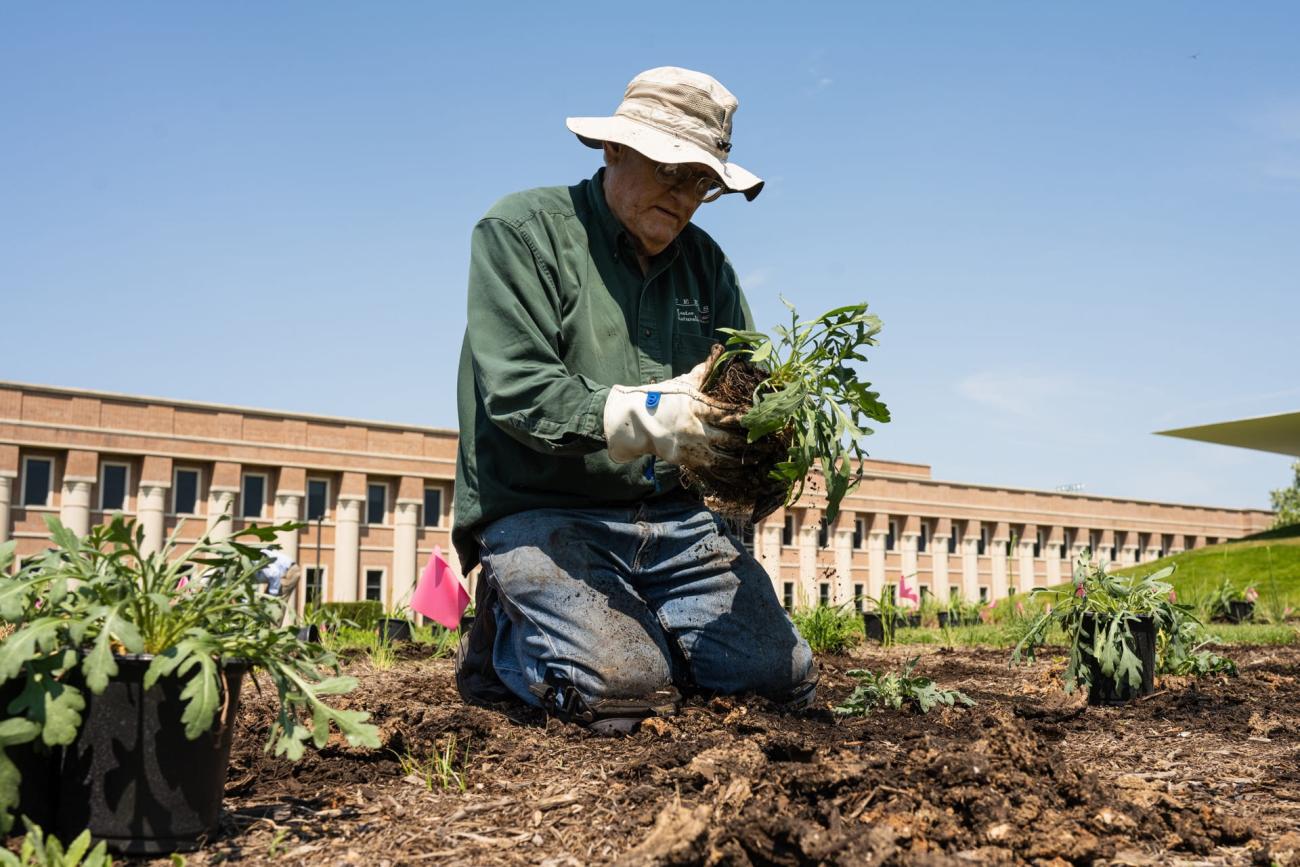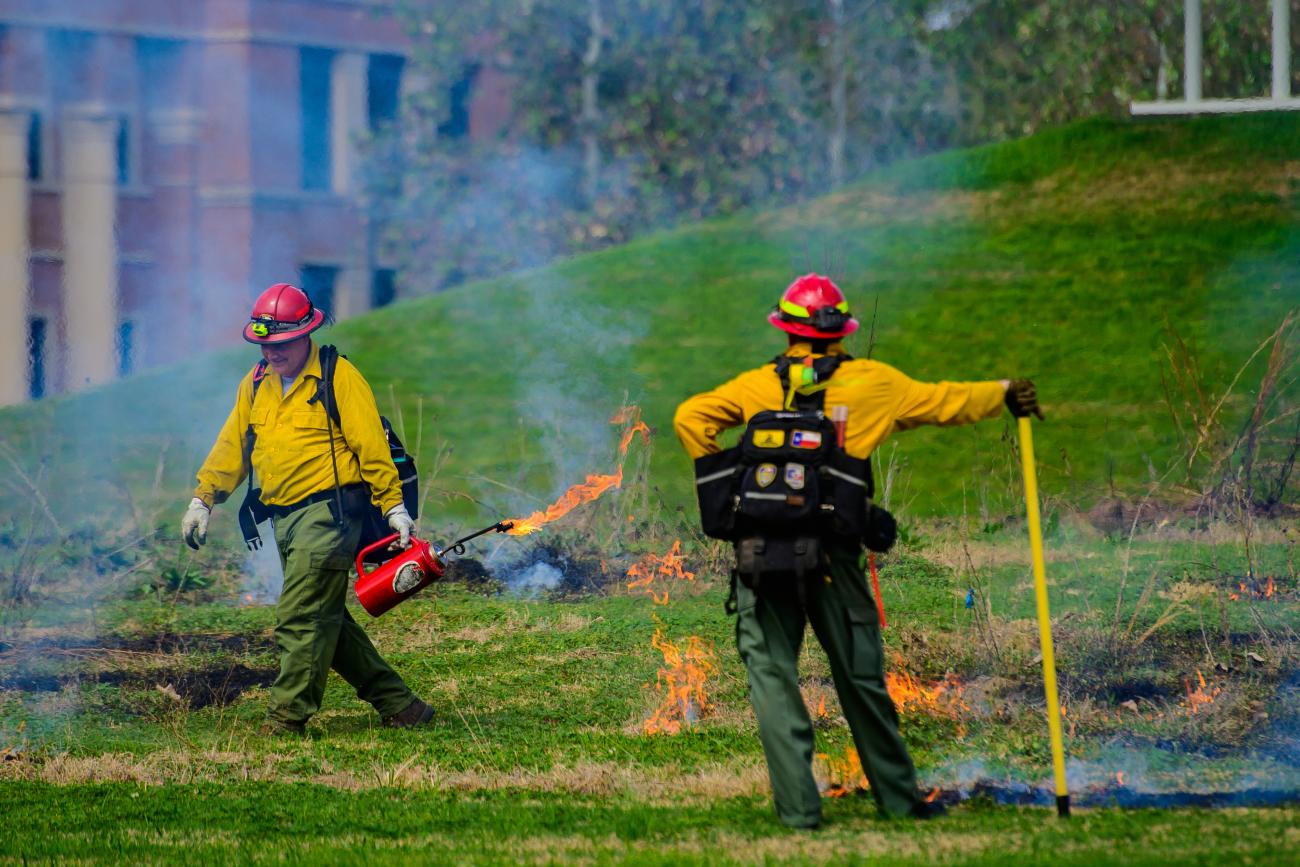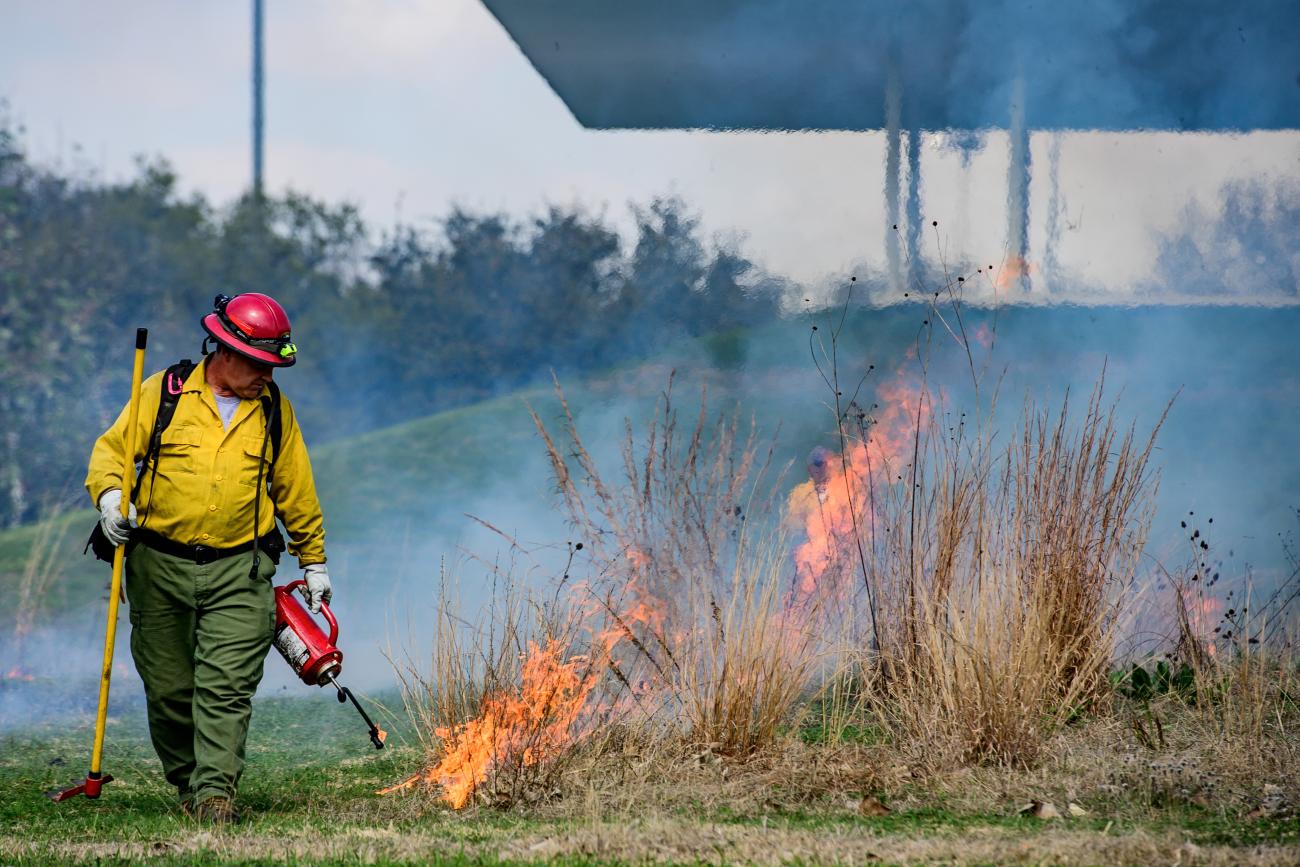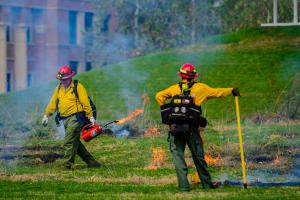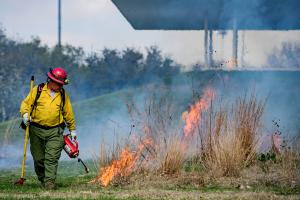Prairie Plots is a living installation on the Rice University campus that envisions an alternative to the ubiquitous mowed lawn. From urban parks to suburban front yards, the mowed lawn is a fixture of American culture. Maintaining the appearance of cropped, homogenous, green grass, however, can be detrimental to people and the environment: irrigation systems are water-intensive, pesticides are toxic, and gas-powered lawnmowers emit noxious fumes. Lawns occupy vast areas of the city, and gasoline-powered lawn and garden equipment are responsible for 24% to 45% of all non-road related gasoline emissions.
Prairie Plots is a collaboration between Rice Architecture and Rice Facilities, Engineering, and Planning to replace 10,000 square feet of existing campus lawn with endemic prairie plant species. In contrast to a typical lawn, prairie plants require less overall maintenance, including less water and less mowing. In addition to providing habitat for insects and birds, prairies can store significant volumes of water in the soil with their deep root systems, which reduces the impact of stormwater flooding during Houston’s frequent rain events.
In the sixteen plots, visitors will find key species of the Texas Gulf Coast prairie. Many of the plants were collected by seed or transplanted from nearby prairies and are highly adapted to the region’s hot/humid climate. Over time, Prairie Plots is designed to grow and evolve in response to the changing seasons and the environment. Influenced by wind, rain, pollinators, and humans, Prairie Plots demonstrates the benefits of biodiverse and dynamic urban landscapes.
The project was supported by Rice Architecture, Rice Facilities, Engineering, and Planning, and the Arboretum Committee. Many thanks to Coastal Prairie Conservancy, Nature’s Way Resources, MicroLife, and the volunteers who helped with planting.
Learn more.


